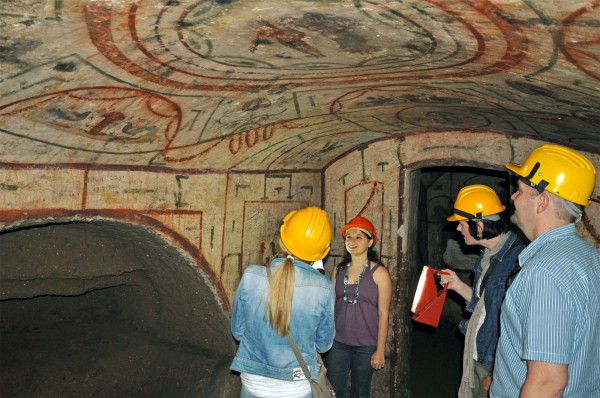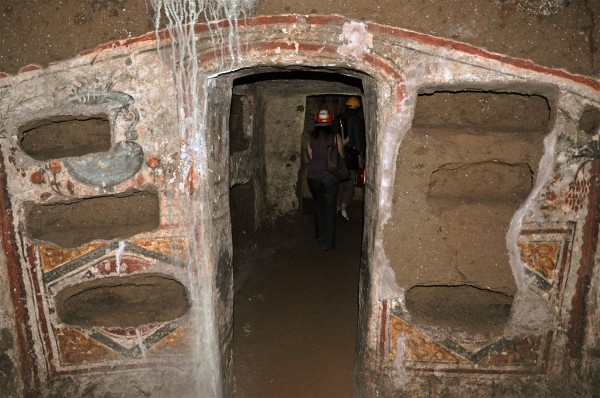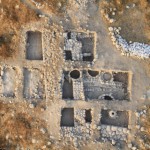“The king asked, ‘What is that tombstone I see?'” (2 Kings 23:17)
On Sunday, the city of Rome opened little-known Jewish catacombs to the public in honor of Pope Frances’ Jubilee Year of Mercy.
Of the six Jewish catacombs in Rome, two have been made accessible: Vigna Torlonia and Villa Randanini — with the latter now open from May 1 to June 5. It is the first time it has been opened to the public in over a decade.
The burial site, which was discovered in 1859 beneath Rome’s Vigna Randanini vineyard and excavated between 1859 and 1862, lies outside the walls that once encircled and protected ancient Rome.
It comprises a maze of tunnels covering 18,500 square meters (199,000 square feet). The tunnels lay five to 16 meters (16 to 52 feet) under the surface and are thought to date to the second and third centuries.
Jewish symbols such as the menorah have also been found inscribed on the walls, as well as inscriptions in Greek, Latin and Hebrew, providing information about those buried in the tombs.
Giorgia Calò, the cultural councilor of the Jewish Community of Rome, said in recent days of the tours, “We have tried to create a suitable itinerary to help people understand how much the Jewish people have been part of Rome.”
Calò stated this past week, Jews “have always been a part of the history of the capital,” though not necessarily by choice. The Arch of Titus built in AD 82 near the Roman Forum commemorates Rome’s siege of Jerusalem in AD 70 in which the surviving Jews of the city were taken as slaves to Rome.

Rome’s victory over Israel in AD 70 is depicted on the Arch of Titus, which is located just southeast of the Roman Forum in Rome. Among the great quantity of Temple treasures carried off to Rome on the roads of the Roman Empire was the Temple’s Menorah.
According to the website Rome Tourist Board, “two-thirds of the known Jewish inscriptions from Ancient Rome come from two catacombs,” including 200 epitaphs from Vigna Randanini.
In contrast, according to the tourist website describing Villa Torlonia, “Some painted cubicles depict not only flower motifs and animals but also subjects typical of the Jewish faith such as the Ark of the Covenant and the seven-branch candelabrum,” adding, “There are curiously no Hebrew inscriptions.”
“Access to the catacombs is through a huge rectangular hall, originally open-air and later divided into two and covered by a vault, probably in order to be used as a synagogue,” the website states.
“The tunnels have ‘shaped’ tombs, that is, excavated in the floor, as well as brick-sealed [containment cavities for the dead, arched recesses for entombing, and above-ground burial chambers] of Phoenician origin, consisting of oven-type [cavities] on several levels,” it adds.









